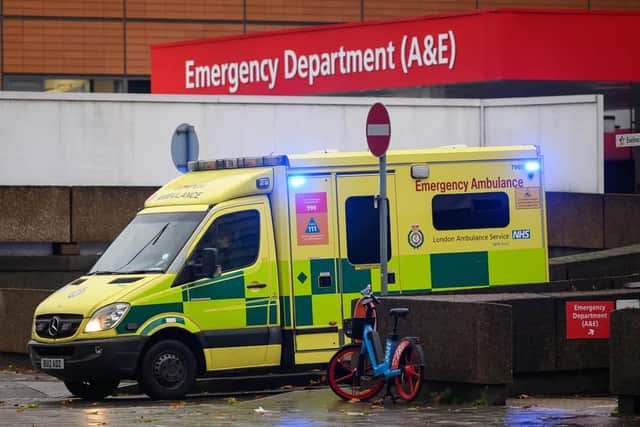More than 500 deaths in England reported last year after long ambulance waits of up to 15 hours
and live on Freeview channel 276
More than 500 deaths of ill patients were reported last year in England following long ambulance waits, which took up to 15 hours. According to an investigative report by the Guardian, fatalities included people who had had a stroke or heart attack, as well as those who had been involved in a road traffic collision.
The report revealed at least 511 people died in England in such circumstances after a 999 call during 2022, based on the figures supplied by NHS ambulance trusts and the outcome of coroners’ inquests. The figure is said to be more than double the 220 known comparable deaths that occurred in 2021.
Advertisement
Hide AdAdvertisement
Hide AdDr Adrian Boyle, the president of the Royal College of Emergency Medicine, which represents A&E doctors, said the staggering figures were “tragic” and “avoidable.” He added: “These numbers are deeply concerning. This is the equivalent of multiple airliners crashing.”
One such case is that of 84-year-old Rita Taylor, who died at home in Milton Keynes last October after falling, banging her head and developing bleeding in her brain. The inquest into her death heard an ambulance was called at 10.28am and arrived almost seven hours later “due to lack of resources”.
Tom Osbourne, the coroner for Milton Keynes, who looked into her cause of death was sufficiently concerned by the ambulance delay that he issued a prevention of future deaths (PFD) report, a legal warning notice, to the NHS minister, Will Quince, and the South Central ambulance service.
However, the Guardian noted the 511 associated deaths are likely to be an underestimate of the true number, as only three of England’s 10 regional ambulance services provided full-year figures for the last two years as requested.
Advertisement
Hide AdAdvertisement
Hide AdThe report also revealed the North East ambulance service (NEAS) recorded 248 deaths last year in cases where its crews could not respond in time to patients deemed to be a category one or category two emergency - more than double the 122 “delayed ambulance response” deaths it had in 2021.
Ambulances are meant to respond to category one calls within seven minutes and category two calls in 18 minutes. Category one calls are for life-threatening injuries and illnesses, especially cardiac arrest. Meanwhile, category two is for emergency calls such as stroke patients.


The West Midlands Ambulance Service and Yorkshire Ambulance Service each recorded 70 deaths last year. In WMA’s case, that was more than triple the 22 it had in 2021.
NHS leaders, staff groups and think tanks all blame increased demand for care, years of underfunding and lack of staff for hospitals being so overloaded that they have to force patients to stay in ambulances outside for many hours, leaving paramedics unable to respond to other 999 calls.
Advertisement
Hide AdAdvertisement
Hide AdNHS England did not directly respond to the figures, according to the Guardian, but said the NHS staff “have worked exceptionally hard, particularly throughout winter” to continue to provide patients with care despite record levels of demand, industrial action and limited capacity, among others.
Comment Guidelines
National World encourages reader discussion on our stories. User feedback, insights and back-and-forth exchanges add a rich layer of context to reporting. Please review our Community Guidelines before commenting.
